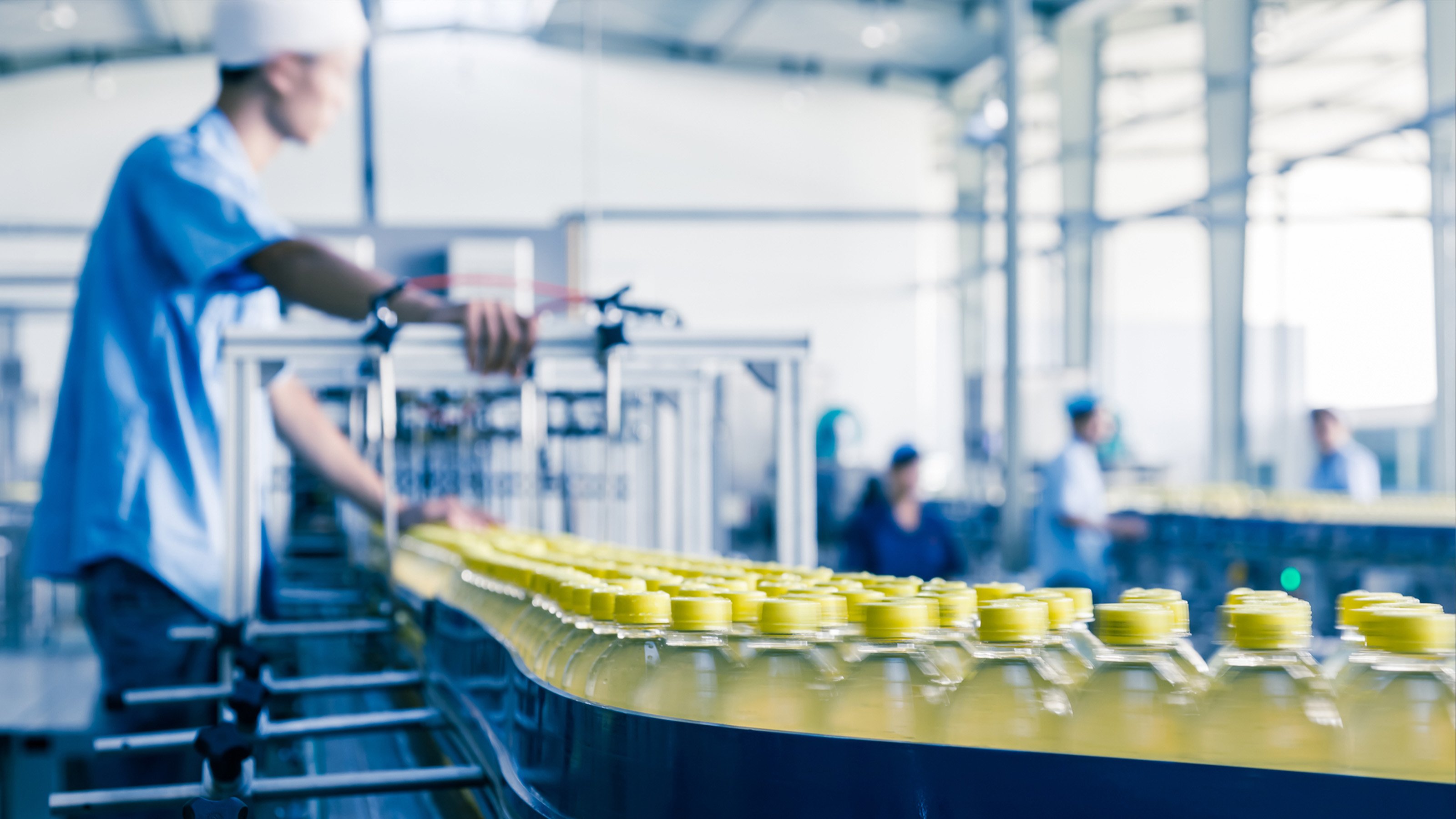Optimale Flexibilität von Tiefkühl-Automatisierungssystemen: drei Ansätze

1. Ein flexibles Tiefkühl-ASRS
Flexibilität kann bei der Konzipierung von Automatisierungslösungen verschiedene Formen annehmen, aber sie beginnt mit den Fähigkeiten des ASRS selbst. Entwickler einer Automatisierungslösung werden in der Regel versuchen, den Durchsatz und die Lagerkapazität eines Systems auf der Grundlage spezifischer Geschäfts- und Produktanforderungen zu optimieren. Wenn ein Unternehmen beispielsweise eine maximale Kapazität und Dichte anstrebt, ist eine Lösung mit mehrfachtiefer Lagerung empfehlenswert. Für ein Unternehmen, bei dem Durchsatz und SKU-Flexibilität im Vordergrund stehen, eignet sich dagegen eine Lösung mit zweifachtiefer Lagerung besser.
Unsere Erfahrung bei der Konzeption von Automatisierungs-Lösungen für gemeinsam genutzte Lager zeigt, dass eine zweifachtiefe Lagerung oft die richtige Balance zwischen dem erforderlichen Durchsatz und der gewünschten Lagerdichte schafft - vor allem dann, wenn die Sortimentsbreite variiert.
3PLs müssen auch sicherstellen, dass ihr System flexibel genug ist, um die gesamte Bandbreite an Palettengewichten und -abmessungen handhaben zu können, die während der Lebensdauer eines Standorts vorkommen können. Ein Kran mit einer Tragfähigkeit von 1.000 kg mag die Anforderungen der aktuellen Kunden erfüllen, aber gilt das auch für potenzielle Neukunden? Um sicherzustellen, dass das Automatisierungssystem die Kundenakquise nicht einschränkt, ist es sinnvoll, Krane mit einer Tragfähigkeit von 1.300 kg einzusetzen, und Lastaufnahmemittel, die das gesamte Spektrum an Palettenabmessungen bewältigen können.
Darüber hinaus sollte die Höhe der Palettenlagerplätze sorgfältig bedacht werden. Ein großzügiges Bemessen der Höhe der Lagerplätze in der Planungsphase kann sich erheblich auf die künftige betriebliche Flexibilität auswirken. Die Planung spezifischer Stellplatzhöhen für den aktuellen Bedarf mag zwar kurzfristig platzsparender erscheinen, führt aber zu Inflexibilität in der Zukunft. Eine höhere Anlage kann zu mehr Systemkapazitäten und Energieeffizienzen führen. Sofern zulässig, eignen sich dafür vor allem Lösungen mit einer Regalverkleidung von mehr als 40 m Höhe.
Ein weiterer Aspekt, der nicht außer Acht gelassen werden sollte, ist die Qualität der Paletten. 3PLs haben wenig Einfluss auf die Qualität der Paletten, die sie erhalten. Schwache oder gebrochene Paletten können jedoch zu Ausfallzeiten in Automatisierungssystemen führen. Und niemand will, dass seine Techniker in den Kühlraum gehen und in der Höhe arbeiten müssen, um Probleme zu beheben, die durch minderwertige Paletten entstanden sind. Der Einsatz von Palettentauschern im Wareneingang ermöglicht den Austausch inkompatibler Paletten. Palettenstützplatten haben sich als praktische Lösung zum Stützen oder Ersetzen schwacher oder gebrochener Palettenkomponenten erwiesen, die andernfalls Ausfallzeiten verursachen würden. Arbeiten Sie mit Ihrem Automatisierungsanbieter daher immer auch an einem Plan für den Umgang mit minderwertigen Paletten.

2. Die richtige Software für einen flexiblen Betrieb in gemeinsam genutzten Tiefkühllagern
Für die betriebliche Flexibilität ist vor allem eines entscheidend: die Software, die das Automatisierungssystem steuert. Ein wesentlicher Aspekt ist dabei die Möglichkeit, den Bestand für verschiedene Kunden mit unterschiedlichen Vorgaben zu managen. Die SynQ-Software von Swisslog ermöglicht nicht nur Bestandskontrolle und -management in Echtzeit, um korrekte Lagerbestände und Lagerplätze zu gewährleisten; sie kann auch jeder Palette Vorgaben bezüglich Eigentum und Handhabung zuweisen, so dass 3PLs problemlos unterschiedliche Kundenanforderungen innerhalb derselben Automatisierungslösung erfüllen können.
SynQ unterstützt außerdem eine größere betriebliche Flexibilität durch die Integration von WMS-, WES- und ACS-Funktionen in einer einzigen Plattform. So können manuelle und automatisierte Prozesse im gesamten Lager über ein einziges System gesteuert werden, was insbesondere für 3PLs von Vorteil sein kann, die Misch-Paletten palettieren. Mithilfe von SynQ lassen sich ASRS-Vorgänge mit manueller, halbautomatischer oder vollautomatischer Palettierung effektiv koordinieren.
Schließlich unterstützt das modulare Design von SynQ einen flexiblen Betrieb, da es den Betreibern ermöglicht, nur diejenigen Module einzusetzen, die sie zu dem jeweiligen Zeitpunkt benötigen, und weitere Module hinzuzufügen, sobald sich die Anforderungen ändern.
3. Optimierte Palettenbewegungen im Tiefkühllager

Das letzte Puzzleteil ist die Automatisierung der Palettenbewegungen im Tiefkühllager. AGVs und AMRs bieten ein Höchstmaß an Flexibilität für die Bewegungssteuerung von Paletten; diese Systeme werden jedoch wegen der Auswirkung kalter Temperaturen auf Leistung und Lebensdauer der Batterien noch nicht für Tiefkühlumgebungen empfohlen. Automatisierte Förderer und Einschienenbahn-Systeme eignen sich besser für Tiefkühlumgebungen und können (wenn richtig konzipiert) auch die nötige Flexibilität ermöglichen.
Automatische Palettenförderer wie der Swisslog ProMove bieten Flexibilität in Bezug auf das Layout und können bei Änderungen im Lagerbetrieb problemlos umkonfiguriert werden. Die Einschienenbahn-Systeme von Swisslog ermöglichen einen höheren Durchsatz als Förderer und bieten mehr Flexibilität, weil sie nicht nur am Boden befestigt werden können, sondern auch als hängende Schiene konfiguriert werden können, wodurch Bodenfläche freigemacht wird. Sie ermöglichen außerdem ein einfaches Routing, erlauben die Ausrichtung der Paletten im Längs- oder Querlauf und sind weniger störanfällig bei Paletten mit schlechter Qualität. Da eine Einschienenbahn sowohl eingehende als auch ausgehende Paletten handhabt, bietet sie die Flexibilität, Paletten bei Verspätungen von Lastwagen oder Auftragsänderungen in letzter Minute einfach in die Automatisierung zurückholen zu können.
Beide Systeme können in der richtigen Umgebung effektiv sein, wobei die Wahl des Systems oft von den Anforderungen an den Gesamtdurchsatz abhängt.
Fazit
Tiefkühlumgebungen schränken die Flexibilität von Automatisierungssystemen in gewissem Maße ein; die richtige Konzipierung einer Automatisierungslösung in Kombination mit der richtigen Software kann jedoch sicherstellen, dass 3PLs über die nötige Systemflexibilität verfügen, um ein breites Spektrum an Kundenanforderungen zu erfüllen, und die nötige betriebliche Flexibilität, um neue Kunden zu gewinnen und das Bestandsmanagement effizient zu gestalten. Swisslog verfügt über jahrzehntelange Erfahrung in der Bereitstellung von Automatisierungslösungen für Tiefkühllager und hat ein bewährtes Portfolio an Technologien, die 3PLs die Flexibilität bieten, die sie brauchen.
Für mehr Informationen besuchen Sie unsere Webseite oder wenden Sie sich an uns.

Erfahren Sie, wie Tiefkühllagerbetreiber durch die Integration von Palettierprozessen im ASRS die manuelle und automatische Palettierung von Mischpaletten optimieren können.












